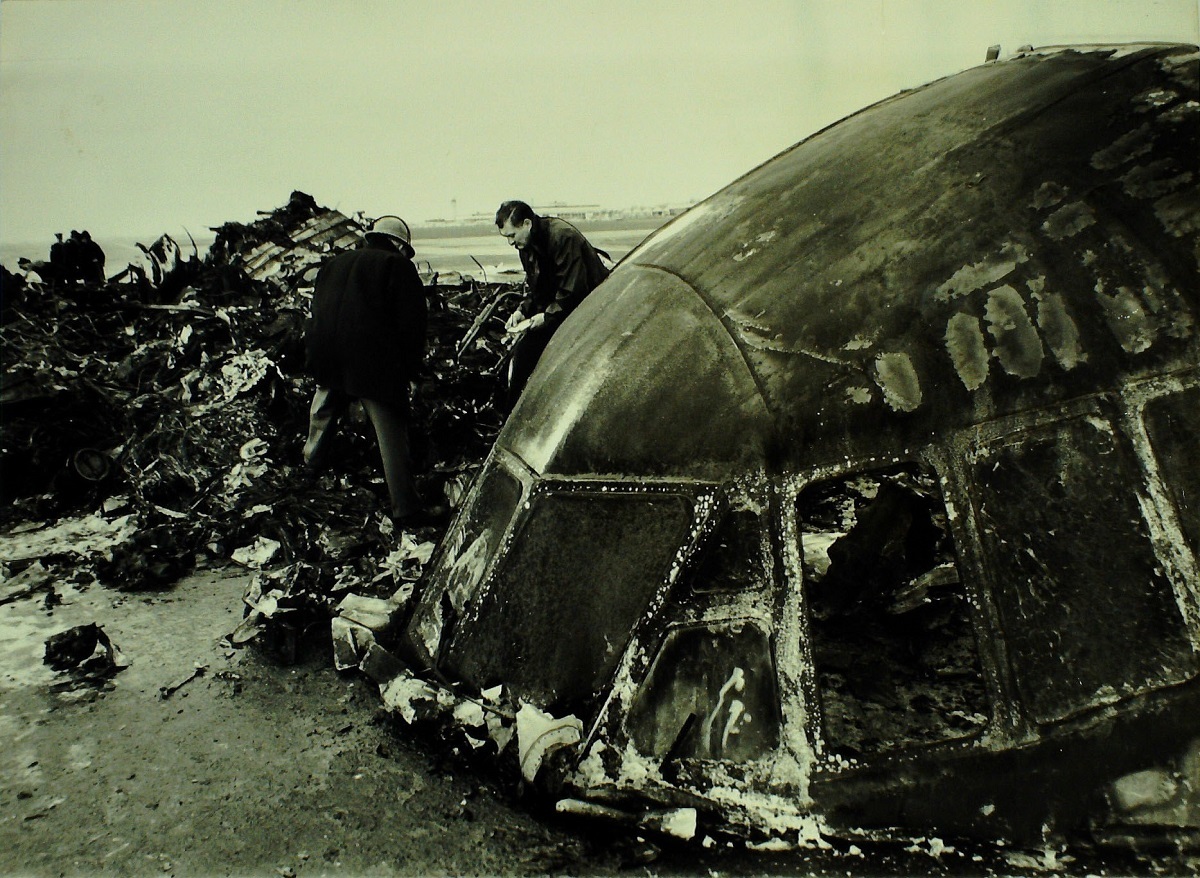
A SHROUD of thick fog blanketed the runway as the flight from Edinburgh made its final and fateful descent.
It was the early hours of the morning, Captain Norman H. Shackell was at the controls of the BEA Vickers Vanguard flight to Heathrow.
Tragically, everything was about to go terribly wrong.
It was October 27, 1965, and as the plane smashed on to the Heathrow runway, the 30 mainly Scottish passengers and six crew on board didn’t stand a chance.
The disaster was the worst to involve a flight from a Scottish airport and left families across the country torn apart by loss.
It made dramatic headlines at the time, but eventually the tragedy was forgotten by many. Instead, each anniversary came to be remembered only by the families left behind.
 London police officers search through the wreckage (Keystone)
London police officers search through the wreckage (Keystone)
Now, though, as the 50th anniversary of the accident looms, bosses at Edinburgh Airport have taken the unusual decision to honour the passengers and crew.
A book of condolence is being opened at the airport’s prayer room so anyone affected by the disaster can pay their respects.
According to airport spokesman Gordon Robertson, the decision to open the book of condolence was taken after some relatives of those on board the stricken flight got in touch to ask if the 50th anniversary of the tragedy could be marked.
“To be honest many of the airport staff here today weren’t aware of the accident,” he added. “We realised there was a real depth of feeling among relatives who got in touch to ask if we could commemorate the anniversary in some way.
“It’s quite unusual given the length of time and that the crash actually happened at Heathrow. But because of the sheer number of Edinburgh people on the flight we felt it was right to respond.”
The tragedy is among Scotland’s worst aviation disasters.
Captain Shackell, 43, was one of BEA’s most experienced pilots and had earlier flown from Palma to Heathrow with his crew before being sent north to take the controls of a 11.17pm flight from Turnhouse.
By 1am, he was approaching Heathrow. However fog was making it difficult he’d already made two attempts at landing. For some reason he opted against diverting to Gatwick. Instead he tried once more.
 The crash site (Keystone)
The crash site (Keystone)
“Perhaps prudence should have told him not to do it,” said aviation historian Keith McCloskey, who has written a history of Edinburgh Airport. “If you can’t see where you are going, don’t fly too low.
“He probably should have diverted.”
As he came in to land a third time, the plane smashed on to the runway. It skidded leaving a scorched pathway stretching nearly three- quarters of a mile before smashing into bits just 150 yards from the airport’s administration offices.
The heat from the blaze was so intense it melted the tar on the runway. According to reports at the time, the plane’s tail fin “snapped off like a child’s toy”.
Nearly half of the passengers were from Edinburgh.
Among them was Edinburgh city councillor, John F. Stewart, 59, flying south to inspect a sports centre, and first-time flier Isabella Clairmount, from Newhaven in the city, who was travelling with her daughter Catherine Rye, 26, and 18-month- old grandson Simon, for a holiday.
The crash was witnessed by Catherine’s horrified husband Douglas at Heathrow. “The fog was thick, it seemed to be there one minute and gone the next,” he said just after the accident. “It was horrifying.”

Enjoy the convenience of having The Sunday Post delivered as a digital ePaper straight to your smartphone, tablet or computer.
Subscribe for only £5.49 a month and enjoy all the benefits of the printed paper as a digital replica.
Subscribe